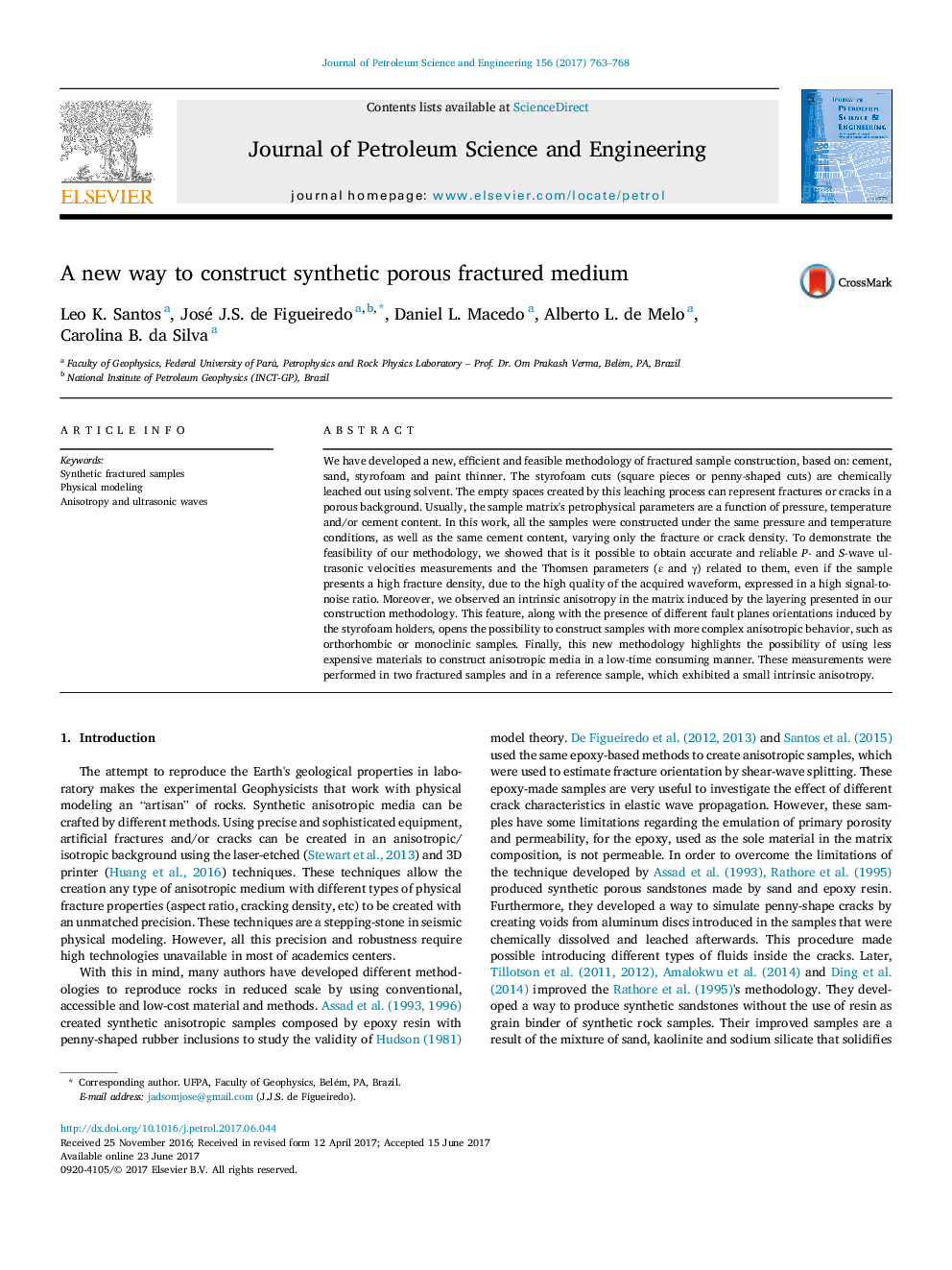| Article ID | Journal | Published Year | Pages | File Type |
|---|---|---|---|---|
| 5484170 | Journal of Petroleum Science and Engineering | 2017 | 6 Pages |
Abstract
We have developed a new, efficient and feasible methodology of fractured sample construction, based on: cement, sand, styrofoam and paint thinner. The styrofoam cuts (square pieces or penny-shaped cuts) are chemically leached out using solvent. The empty spaces created by this leaching process can represent fractures or cracks in a porous background. Usually, the sample matrix's petrophysical parameters are a function of pressure, temperature and/or cement content. In this work, all the samples were constructed under the same pressure and temperature conditions, as well as the same cement content, varying only the fracture or crack density. To demonstrate the feasibility of our methodology, we showed that is it possible to obtain accurate and reliable P- and S-wave ultrasonic velocities measurements and the Thomsen parameters (ε and γ) related to them, even if the sample presents a high fracture density, due to the high quality of the acquired waveform, expressed in a high signal-to-noise ratio. Moreover, we observed an intrinsic anisotropy in the matrix induced by the layering presented in our construction methodology. This feature, along with the presence of different fault planes orientations induced by the styrofoam holders, opens the possibility to construct samples with more complex anisotropic behavior, such as orthorhombic or monoclinic samples. Finally, this new methodology highlights the possibility of using less expensive materials to construct anisotropic media in a low-time consuming manner. These measurements were performed in two fractured samples and in a reference sample, which exhibited a small intrinsic anisotropy.
Keywords
Related Topics
Physical Sciences and Engineering
Earth and Planetary Sciences
Economic Geology
Authors
Leo K. Santos, José J.S. de Figueiredo, Daniel L. Macedo, Alberto L. de Melo, Carolina B. da Silva,
